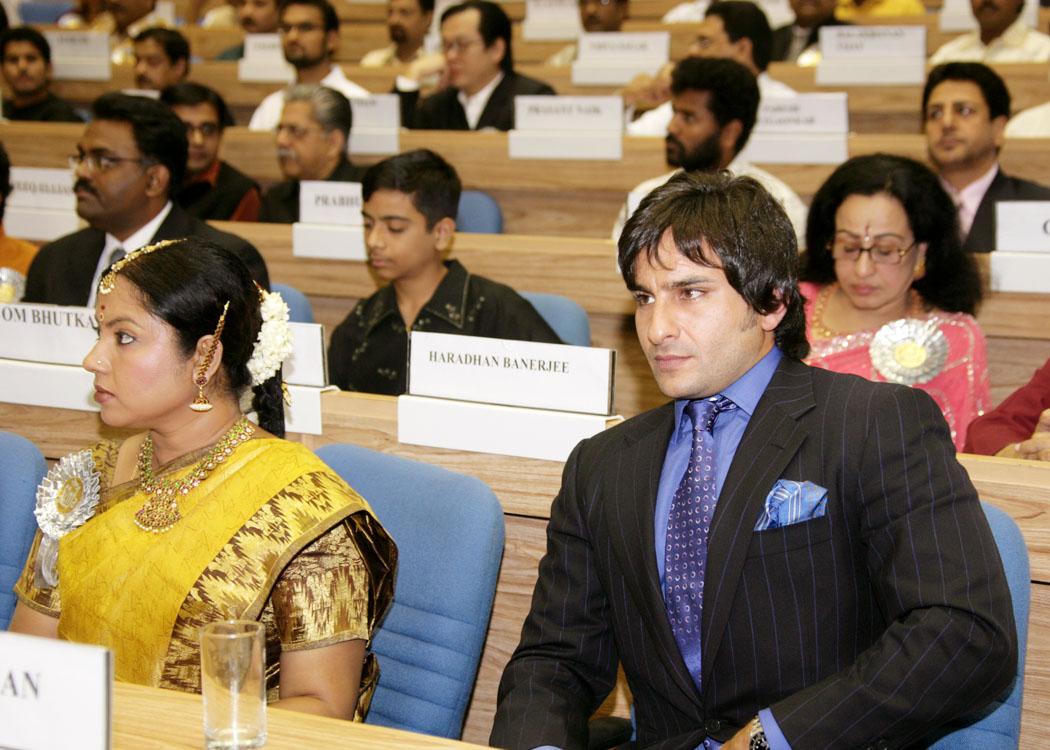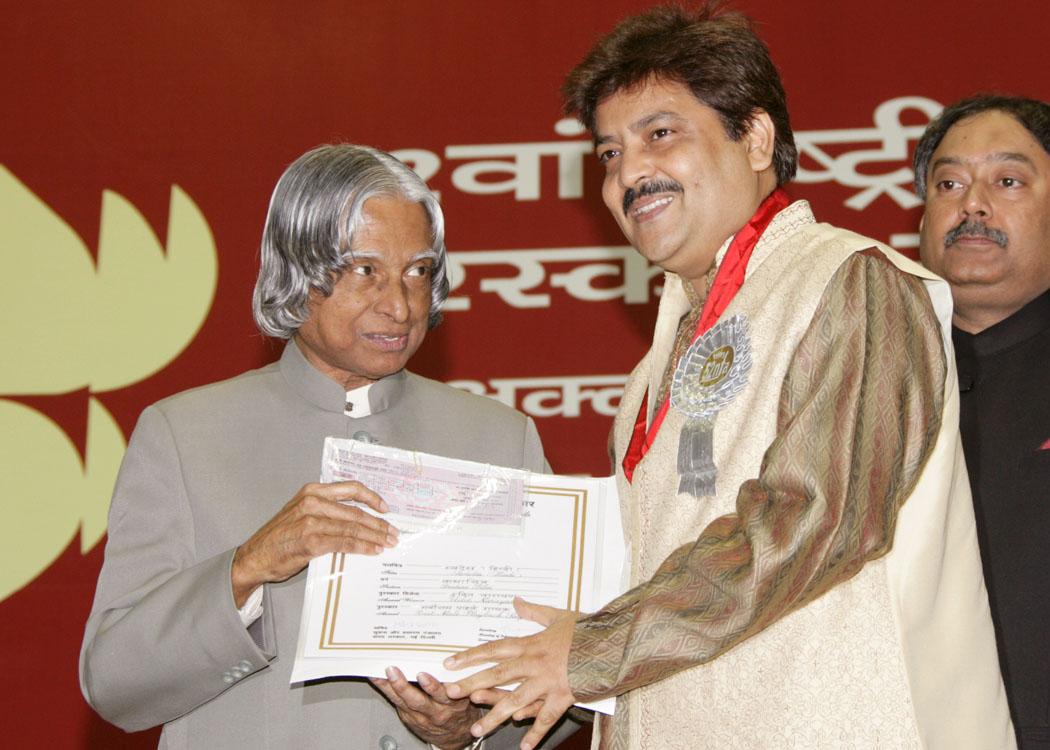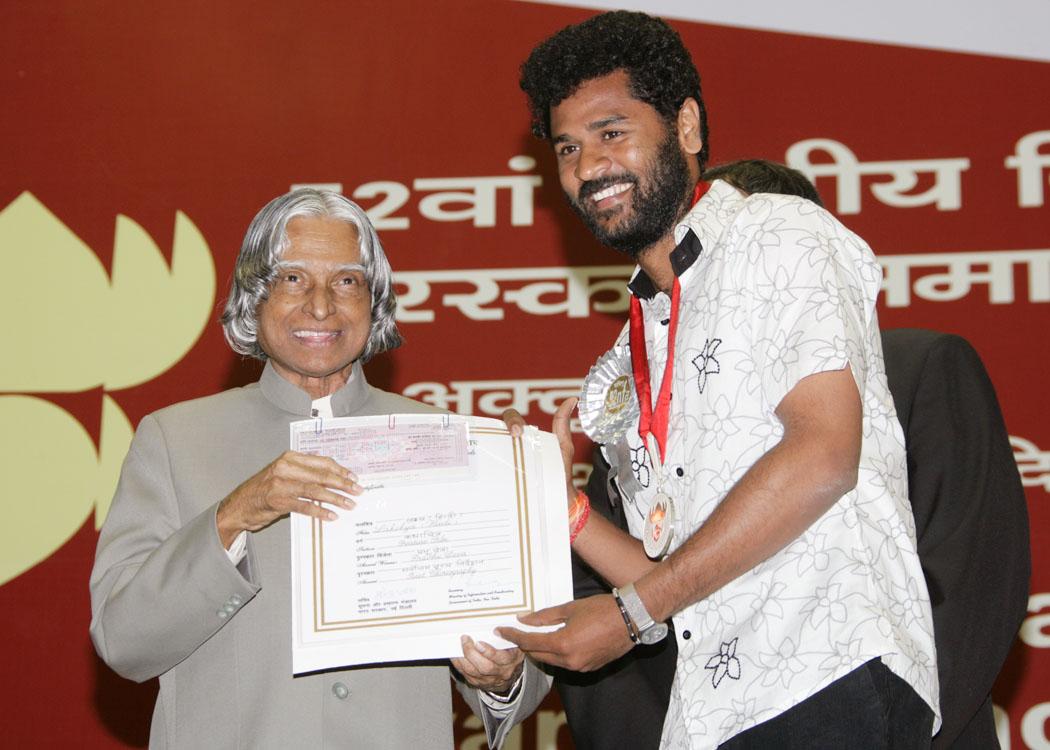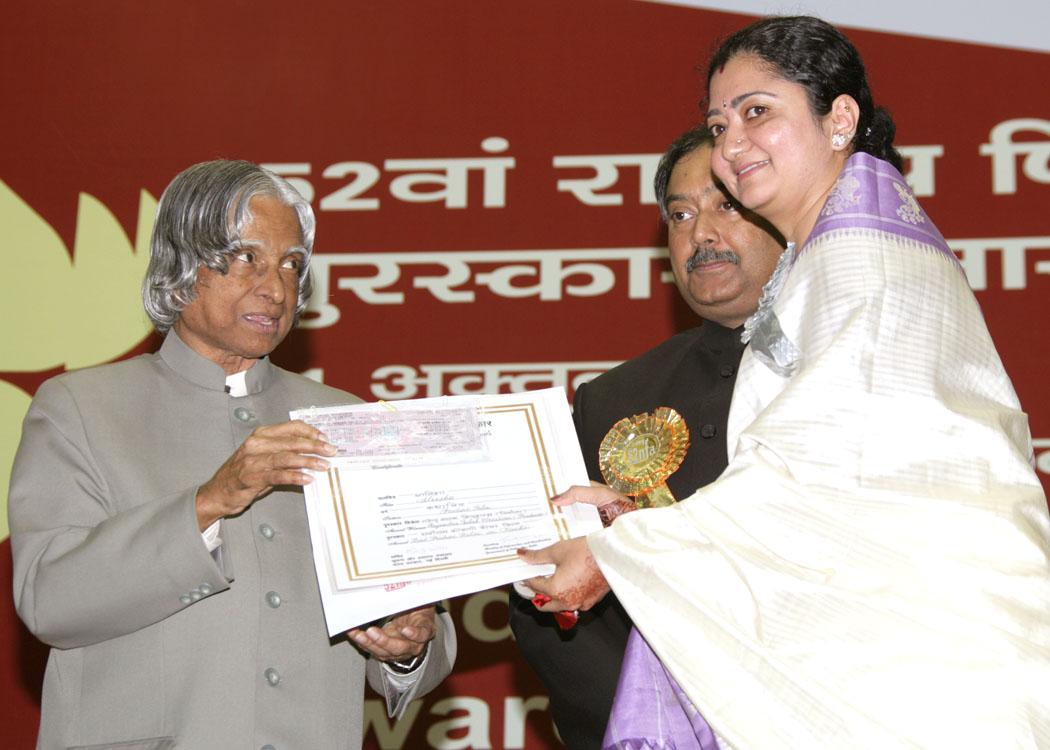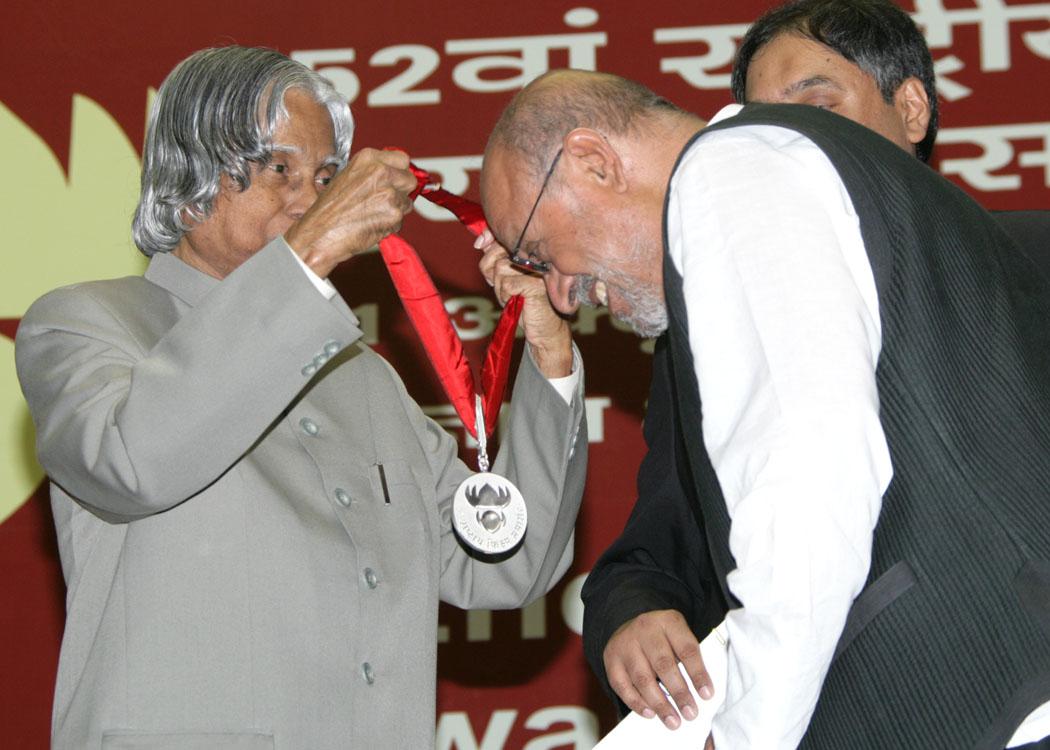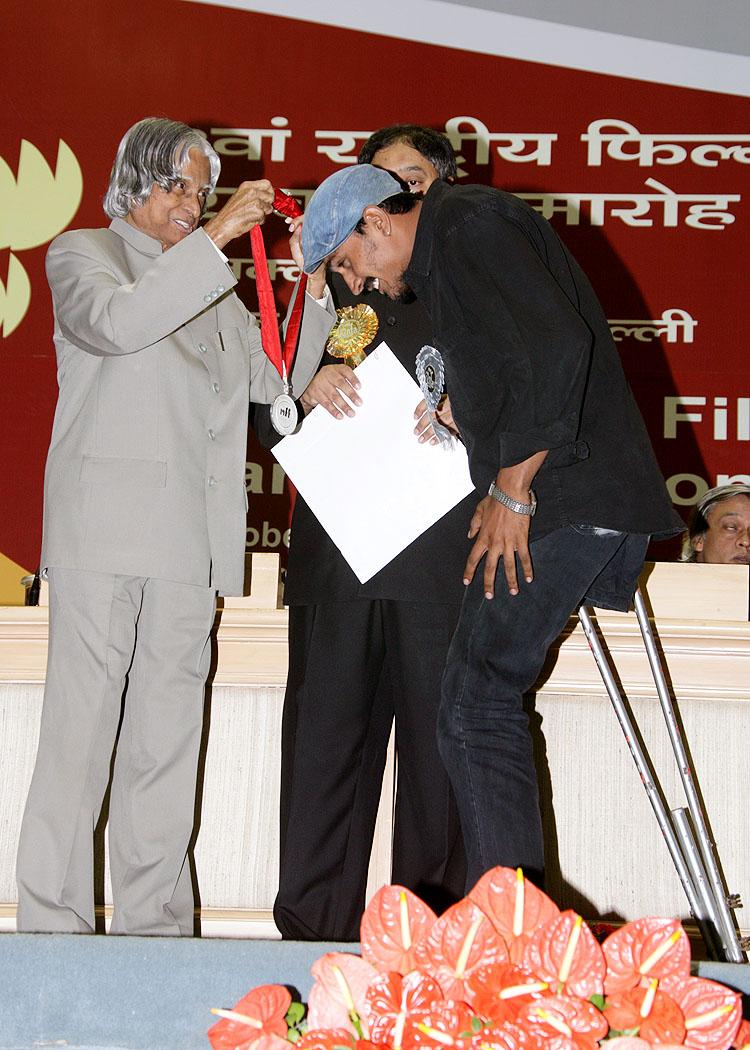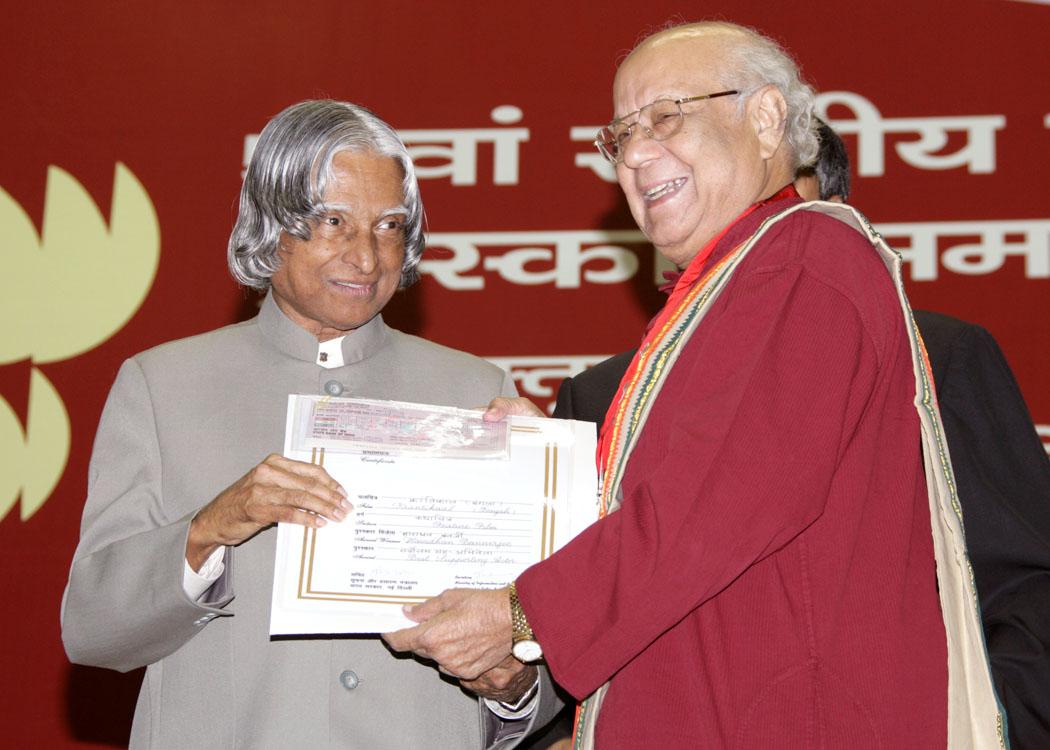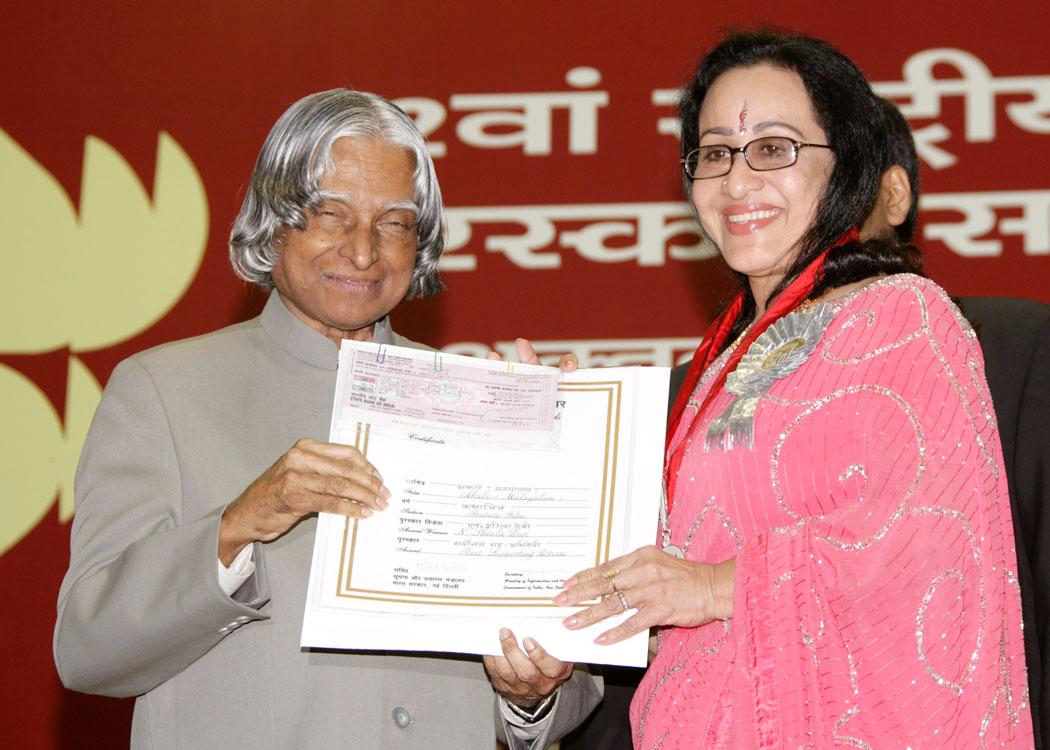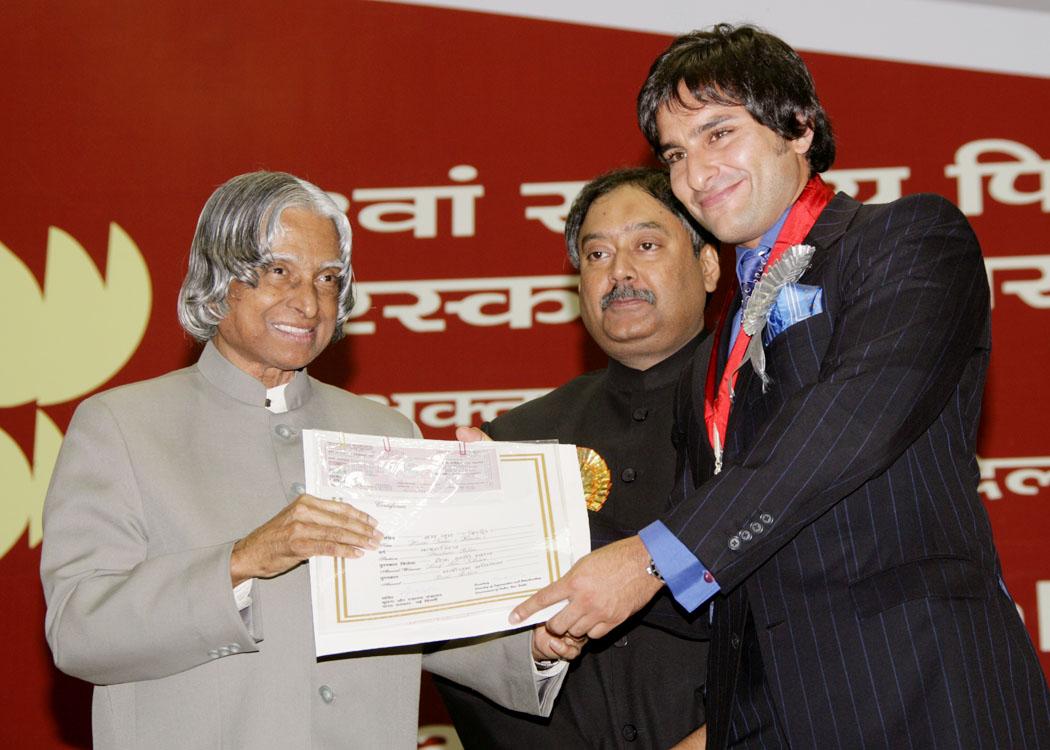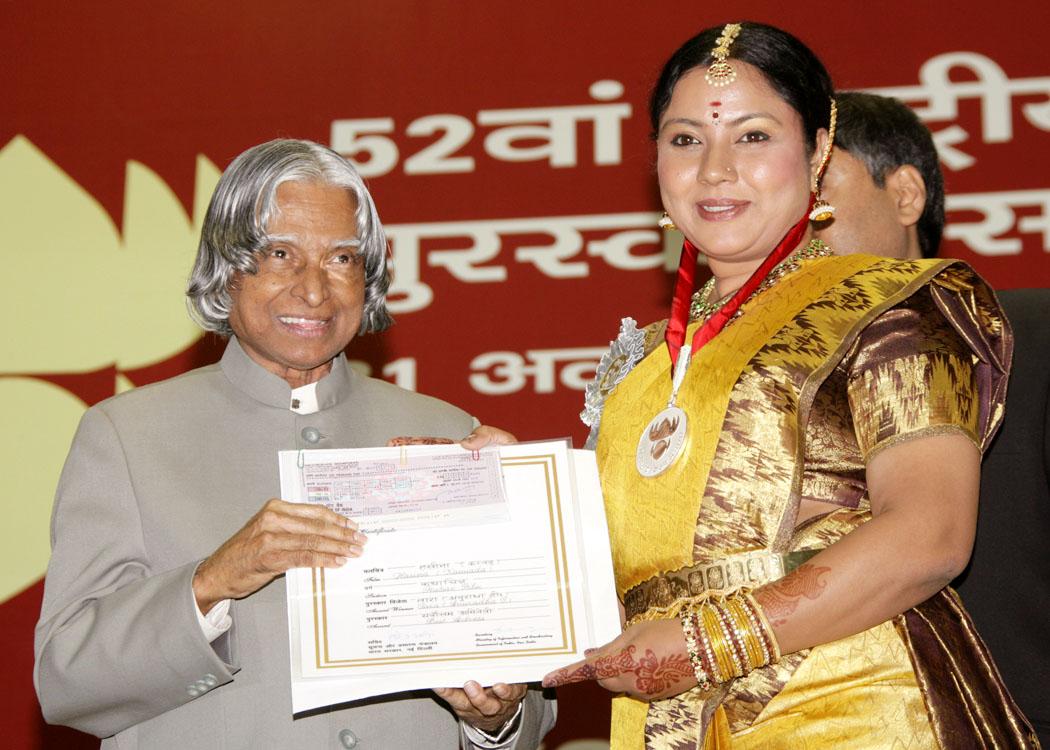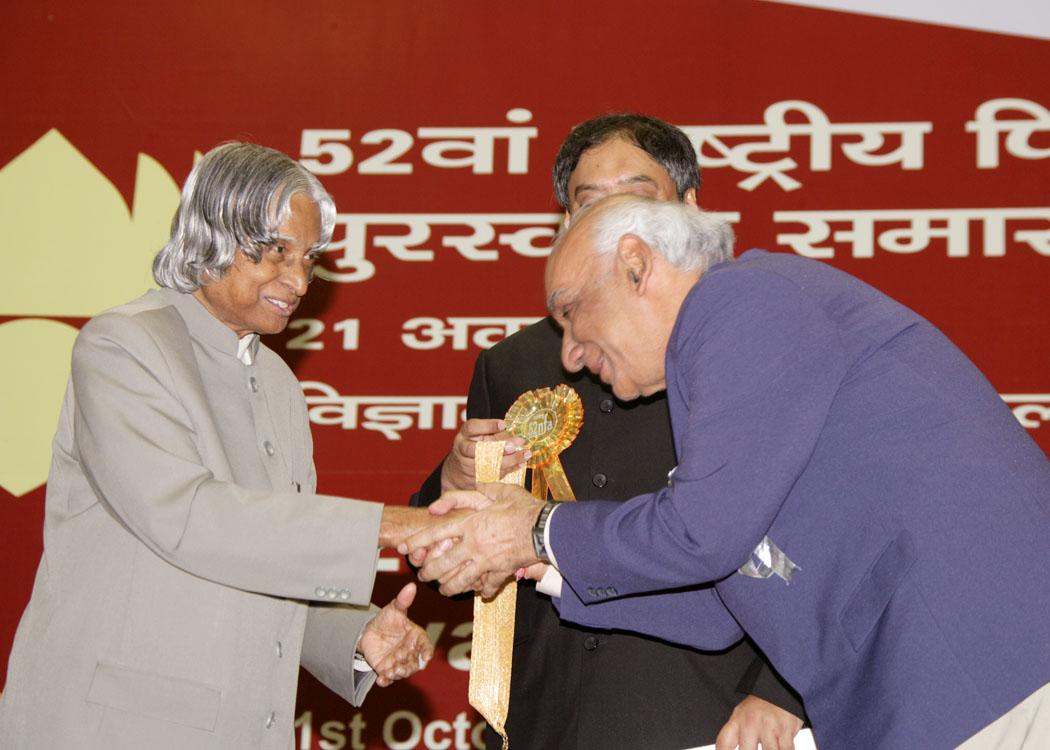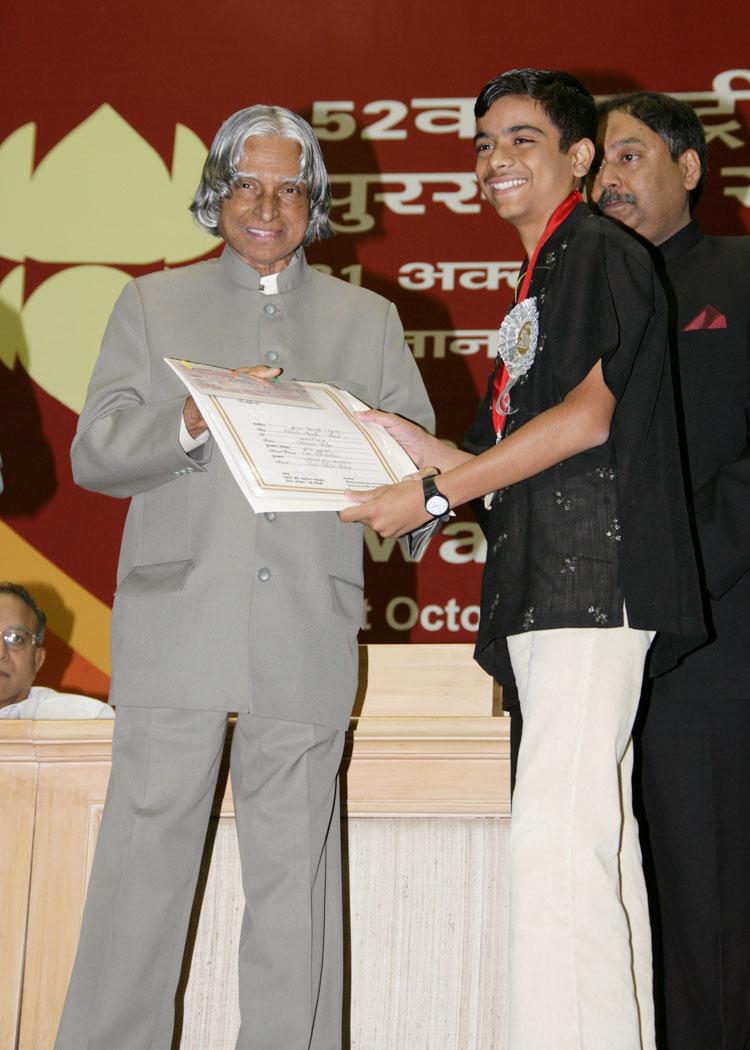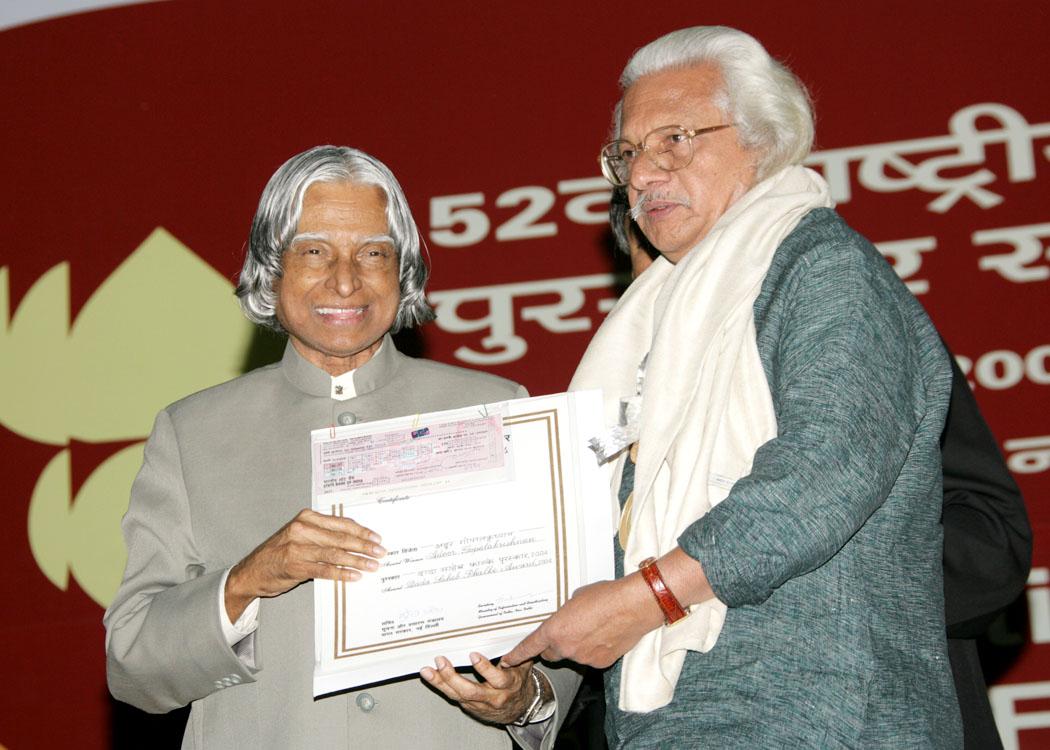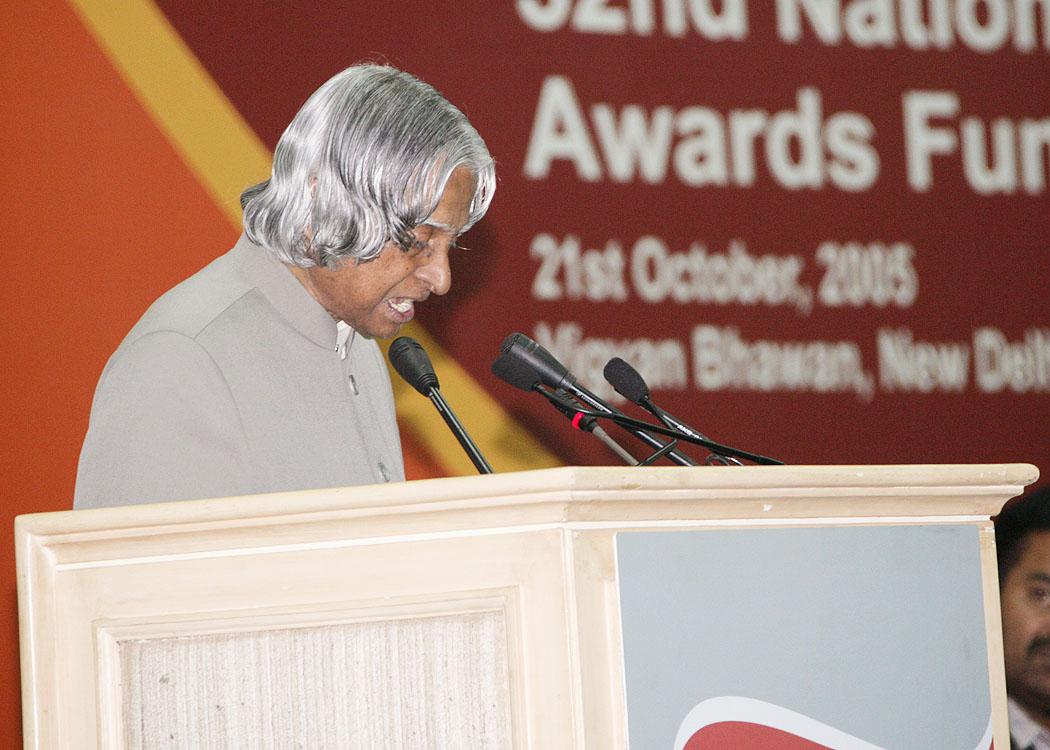Address At The 52Nd National Film Awards Function, Vigyan Bhavan, New Delhi
New Delhi : 21-10-2005
What I will be remembered for?
I am indeed delighted to participate in this National Film Awards function. I congratulate all the award winners, artists, technicians and all those associated with films, for their excellent performance in various facets of entertainment industry. I particularly congratulate Shri Adoor Gopalakrishnan for winning the coveted Dada Saheb Phalke Award for the year 2004.
When I see the galaxy of personalities from the film industry assembled here, I was wondering what I can talk to you. You have the ability to make people laugh, you can make people cry, you can make people angry, you can make people to get inspired, you can also make people to get depressed. Like this, you can touch the emotions of the viewer and create an impression in his mind temporarily or at times for a long period. Such is the power of your presentation. Every one of you whether a creator of a poem or song, story, dialogue, photography, various types of action including humour and direction; all in an integrated way, you can definitely achieve perfection. And you will be known for creating tears with bitterness or tears with sweetness. In short, you can be a hero, every field of your profession. Hence I am posing a suggestion for every one of you assembled here. Have great aim in your life time ? and ask yourself "What I will be remembered for?"
What you will be remembered for? You have to evolve yourself and shape your life. You should write in a page. That page may be a very important page in the book of human history. Would you like to add your page? I am going to narrate the experience which I had in three places which I have visited in the rural area of our country. If you care to have a page in the history, please study the three experiences. This may give you an opportunity to answer the suggestion I gave you "What I will be remembered for? ', or you may evolve new opportunities to create a page in the human history.
I. Chitrakoot Model (Experience 1)
Recently I visited Chitrakoot in Madhya Pradesh, where I met Shri. Nana Deshmukhji (Age 90) and his team members belonging to Deendayal Research Institute (DRI). DRI is a unique institution developing and implementing a village development model which is most suited for India. DRI understands that people's power is more potent, stable and enduring than political power. By becoming one with the oppressed and depressed, one gains the acumen of administration and governance. Social advancement and prosperity are possible only by injecting the spirit of self-reliance and excellence in the younger generation. Using this principle, DRI has plans to develop one hundred clusters of villages having approximately five villages each around Chitrakoot. They have already developed 80 villages in 16 clusters consisting of about 50,000 people. I witnessed one of the villages called Patni where the institute has promoted sustainable development based on indigenous and traditional technology, knowledge systems and local talents. The research work by the institute through field studies facilitates the development of replicable and tangible model for achieving self-reliance in villages. The programme aims at income generation through value addition, innovative agricultural practices, inculcating scientific temper among the villagers, improvement of health and hygiene, striving towards 100% literacy. Apart from all these development activities, the institute is facilitating a cohesive conflict free society. As a result of this, I understand that the eighty villages around Chitrakoot are almost litigation free. The villagers have unanimously decided that no dispute will find its way to court. The differences will be sorted out amicably in the village itself. The reason given by Nana Deshmukhji is that if the people fight among each other they have no time for development. They can neither develop themselves nor the community. This message has been understood by the society and they have decided not to embark on any fighting. All these have been accomplished through DRIs "samaj-shil-pi dampati" (a graduate married couple) a new concept of counseling and intervention promoted by DRI. Friends, you will see more hero's in Nanaji's villages and more smiles. Is it not a rich place for cinema story writer or cinema poet or a cinema director? This is the place where, you will find more hero's, more heroines, more happiness and less tragedy.
II. Pravara Model (Experience 2)
Similarly, I saw in Maharashtra the Pravara Integrated Rural Development Complex, Loni and interacted with the village citizens. This complex has come out of the vision of Dr.Vithalrao Vikhe Patil, whose basic ideology was people centric development and societal transformation. The movement started with a creation of number of people's co-operatives. The pioneers have worked consistently for over five decades to realize Pravara complex and have now provided the benefits of healthcare, education and employment to all the village citizens. They have integrated 20 villages with a population of over eighty thousand people through tele-medicine. The basic emphasis of this programme is to provide healthcare for rural women and children. The complex has engineering college, medical college, dental college, Physiotherapy College Apart From plus two schools and other primary and secondary schools. All the villagers have been provided employment in Sugarcane factory and other food processing units. All of them have been lifted above the poverty line. The unity among the villagers is a real sight to see. During my visit to Pravara Medical College organized a function where over 900 polio affected poor children have been rehabilitated through the efforts of the Pravara Medical Trust in collaboration with NIMS, DRDO, ALIMCO and number of NGOs. These light weight calipers were realized as a technology spin off from the composite materials which were primarily developed for missile structures. Here the place, I found not only the economic development of the villages, but also built with the spiritual background.
III. Periyar PURA (Experience 3)
Last year I had visited Periyar Maniammai College of Technology for Women, Thanjavur and inaugurated a PURA Complex. I thought of sharing with you the developmental concept of a cluster of over 65 villages near Vallam, Thanjavur district of Tamilnadu which involves a population of 3 lakhs. This PURA complex has all the three connectivities - physical, electronic and knowledge - leading to economic connectivity. The centre of activity emanates from the women engineering college that provides the electronic and knowledge connectivity. I understand that now five of the Periyar PURA villages have been connected with Wi-MAX connectivity. Periyar PURA has health care centres, primary to post graduate level education and vocational training centres. This has resulted in large scale employment generation and creation of a number of entrepreneurs with the active support of 850 self-help groups. Two hundred acres of waste land has been developed into cultivable land with innovative water management schemes such as contour ponds and water sheds for storing and irrigating the fields. All the villagers are busy in cultivation planting Jatropha, herbal and medicinal plants, power generation using bio-mass, food processing and above all running market centres. This model has emanated independent of any government initiative. The committed leadership has been provided by a Women's Engineering College.
Conclusion
So far I have discussed about three sustainable rural development models one in Madhya Pradesh, one in Maharashtra and one in Tamil Nadu. All these developments have come out of individual or institutional efforts. I am discussing these models with you so that with your creative cinematography skills you can depict number of screen plays based on these models. These screen plays will definitely be a box office success. In addition, it will spread the message of development efforts taken by different groups and success achieved in transforming the village clusters into vibrant economic and education centres to the masses. This will lead to many individuals and organizations to replicate these models in their own region using the local core competence and bring prosperity to the seven hundred billion people living in six hundred thousand villages of our country. This will eventually remove the rural-urban divide. I would consider that this will be one of the important contributions from the film industry for national development. Film medium should help its fans to think good, speak good and do good to the society. Can the film personalities who have assembled here, promote these feelings among their audience, through their creative work? This can be done through celebration of success stories as I have described earlier, and creation of role models. In addition to this accomplishment of big mission need perseverance. Can you teach perseverance to individuals who try to achieve societal transformation in their own region? This message is important for every Indian. Everyone can gain something from it. Your audiences relate themselves with the characters you depict on the screen. If you take the message of hope, all our people will be able to put their best and succeed. I am sure; it will bring real joy to our billion countrymen and inspire them for greater deeds. Hence friends, what a beautiful scene I am seeing in front of me, Film directors, story designers, script writers, poets, song designers, musicians, technicians, actors and actresses and many supporting successful artists, all of you have an opportunity to perform through the three scenes that I have depicted about the three village clusters. You have material to answer the question "What I will be remembered for?" by your action.
May God bless you all in this noble endeavour.

